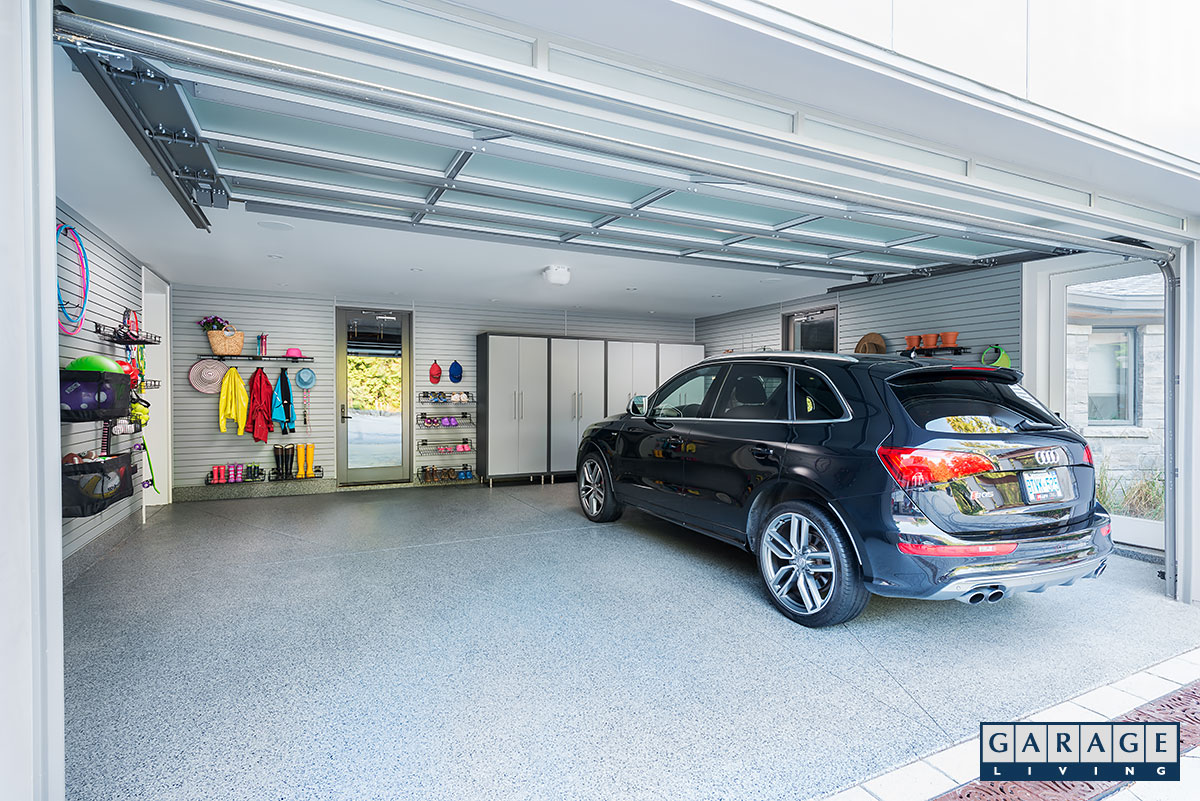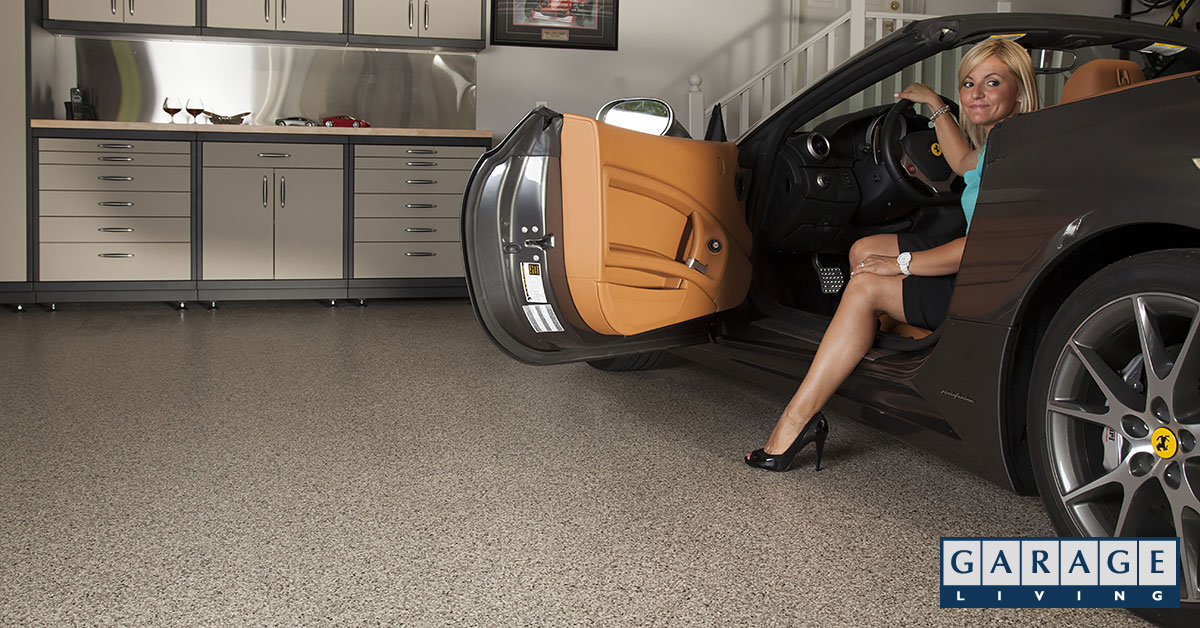
Your attached garage air quality may not rank highly on your list of home-related concerns, but it should.
Garages are an incredibly important space in our homes. When designed properly, a garage should function effectively as an extension of your living space.
However, it’s the very nature of a garage’s many functions that warrants diligence and care in order to keep the space’s air quality safe.
Why attached garage air quality matters
Attached garage air quality matters because the space’s two main purposes are for parking emission-releasing vehicles and storing items that can include hazardous materials.
Because your garage is attached to your house, it naturally has an impact on the rest of your home’s safety. Paying attention to your attached garage air quality is also important for these reasons:
- more homeowners are using attached garages as the main access point to their house
- many adults spend hours in the garage exercising or doing other hobbies
- kids use the garage as a space to play
VOCs in the home
Most of us are now well-educated on the hazards of carbon monoxide in the home. Compared to a decade ago, carbon monoxide detectors are now far more commonplace in homes.
The hazards of volatile organic compounds (VOCs) in the home aren’t as well-known, however. VOCs are compounds found in many types of products in our homes. Examples included paints, cleaning products, building materials, office equipment, and furnishings.
VOCs slowly release chemicals into the air we breathe. Benzene is one of the most common VOCs found indoors, but typically in such small concentration amounts that it doesn’t pose a health risk to us.
A 2013 Health Canada study showed that more than half of the country’s single-family homes had an attached garage. Indoor exposure levels to benzene were found to be three-fold higher in these homes compared to those with detached garages, or without garages.
That last fact may sound ominous, but even these benzene air concentrations in homes with attached garages were still considered “very low” by Health Canada’s standards.
9 tips for improving your attached garage air quality
While the risks of indoor exposure to VOCs for homeowners is considered to be low, there are a few smart strategies you should use to improve your attached garage air quality.
Here are nine tips that will make your garage’s air safer (and smell a little nicer).
1. Don’t idle your vehicles in the garage
Do you regularly warm up your vehicles in your attached garage on cold mornings? Even with your garage door open, that’s not a good idea.
Idling your car in the garage for lengthy periods is the quickest way to negatively impact your attached garage air quality. Even with today’s tougher vehicle emission standards, all sorts of pollutants (including benzene and carbon monoxide) are released into the air from any non-electric running vehicle.
Avoid running any vehicle (including recreation vehicles) for an extended period of time in the garage, whether it’s attached or detached. Do so outside, with your exhaust as far from your open garage door as possible (or better yet, close the door). Also make sure to run any gas-powered tools outdoors.
2. Install garage ventilation
A garage ventilation system is one of your best defenses against poor attached garage air quality. Improved airflow in your garage has several benefits:
- helps remove VOCs
- keeps the air fresher
- helps the garage maintain more stable temperatures
- reduces garage condensations levels that can cause mold and mildew
A mechanical air ventilation system (meaning one that’s powered) installed in your garage’s roof or walls will deliver the best results. A passive ventilation system (such as a wind-powered turbine roof vent) is less effective, but still worthwhile.
3. Air the garage out periodically
Even after a vehicle has been shut off, it releases benzene into your garage’s air. And because garages are also used for storing a wide range of items that release VOCs, airing your garage out occasionally is a very good idea.
Airing your garage out periodically doesn’t just lower your level of VOCs, it also helps get rid of that stale, musty smell that garages can develop, especially older garages. You can use a fan or two to speed up the airing out process.
4. Use environmentally-friendly garage flooring
Keeping the VOC levels in your garage as low as possible makes your home safer. One way to do that is to look for more environmentally friendly products for any home improvement projects.
Your garage’s floor coating makes your space look nicer and also adds protection for your floor surface. It’s a given that any floor coating is made up of a combination of different chemicals. Some coatings, however, release more VOCs than others.
Floortex™ polyaspartic floor coatings ensure that an ultra-low level of VOCs is released into your garage space. Not only will your garage floor look spectacular, you’ll be choosing the safest flooring option when it comes to your attached garage air quality.

A Floortex™ floor coating is the most environmentally friendly garage floor coating option available.
5. Cover and clean your garbage cans
Your attached garage air quality is worth giving your attention to for more than just health reasons. Your comfort level in the garage is also important and no one likes a stinky garage space.
Poorly maintained trash disposal undoubtedly can make the garage a space you want to avoid. Make sure your garbage cans or bins have functional lids that securely contain any foul odors.
And while it’s not a pleasant job, it’s necessary to thoroughly clean out your garbage receptacles occasionally. Use a bristle cleaning brush with detergent or soap (or bleach for especially filthy trash containers).
6. Don’t grill in the garage!
You’d think this would be an obvious no-no, but grilling in the garage is more common than you might think. Usually, it’s lousy weather that prompts someone to move their barbecue into their garage so they can stay dry or warm, while still getting the family’s dinner cooked.
A dry garage might be a more comfortable and convenient space to grill in such circumstances. It’s dangerous on a couple of levels, however, even if your grill is positioned at your open garage door.
First of all, having an open flame in an enclosed space that contains numerous flammable materials obviously isn’t smart. Secondly, charcoal and gas grills produce a lot of carbon monoxide, which can quickly seep into a home.
7. Stop smoking in the garage
It might seem more responsible to have your smoke in the garage instead of your main living space. Smoking in the garage still produces benzene, though.
And just as it’s not wise to have a flame source like a barbecue operating in the garage, smoking in there can also lead to safety issues.
For example, extinguishing a cigarette in an old planter stored in the garage might seem harmless…except for the fact that fertilizer in the soil could cause a combustion to occur, even hours later.
8. Use a shed for supplemental storage
Storing some of your belongings and supplies in a well-ventilated shed is another wise strategy for maintaining a healthier level of attached garage air quality.
Higher temperatures also accelerate the release of VOCs in the air. Consider storing any of these items in a shed, especially during the summer:
- fertilizers
- pesticides
- pool chemicals
- gas cans
- solvents
- gas-powered tools
9. Declutter and clean regularly
Garage clutter restricts your ability to clean regularly and gives dust and dirt a convenient spot to accumulate. If you’re able to keep your garage tidy and clutter-free, this will create better airflow within the space.
Some garage junk, like cardboard boxes and textiles, also retain moisture. This increases the likelihood of mold developing in your garage.
Take the time to declutter and clean your garage periodically, including safely disposing of old paint, chemicals, and cleaning supplies that are no longer useful.
Take advantage of helpful garage storage systems like slatwall panels, storage racks, and cabinets to make garage organization easier.
Pay attention to your attached garage air quality
Being more attentive about your attached garage air quality will keep your home and family safe. All it takes is a little bit of common sense, better garage organization, and some preventative maintenance.
For professional help with getting your garage cleaner and more organized, schedule a free consultation with a Garage Living design consultant.